#contemporary Latvian art
Explore tagged Tumblr posts
Text

Egor Buimister (Latvian, b. 1997), A Tree of Night, 2021. Oil on canvas, 55 x 38 cm. (Source: Egor Buimister)
#art#artwork#modern art#contemporary art#modern artwork#contemporary artwork#21st century art#21st century modern art#21st century contemporary art#Latvian art#modern Latvian art#contemporary Latvian art#Latvian artist#Egor Buimister
355 notes
·
View notes
Text
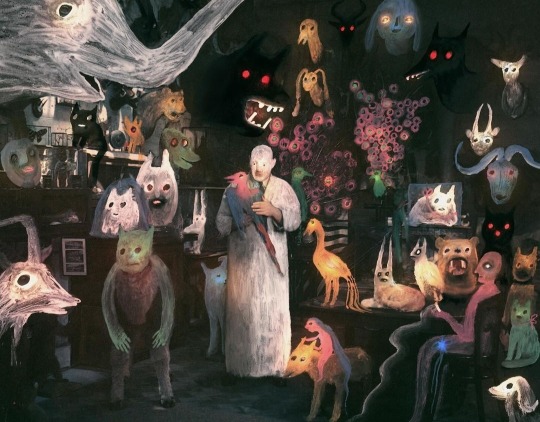

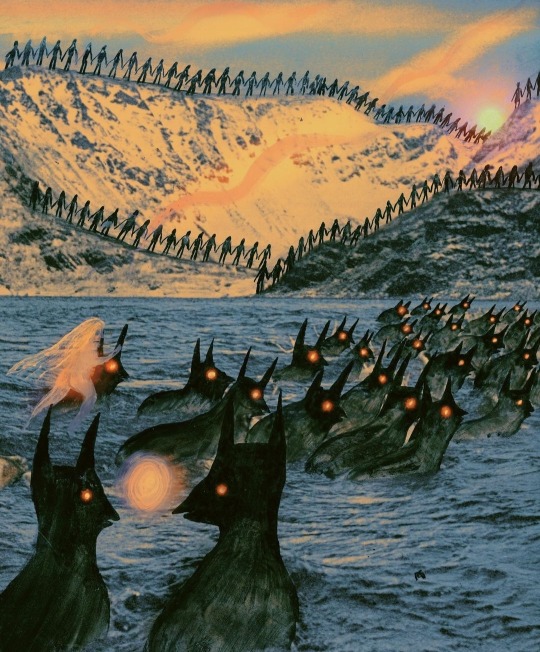

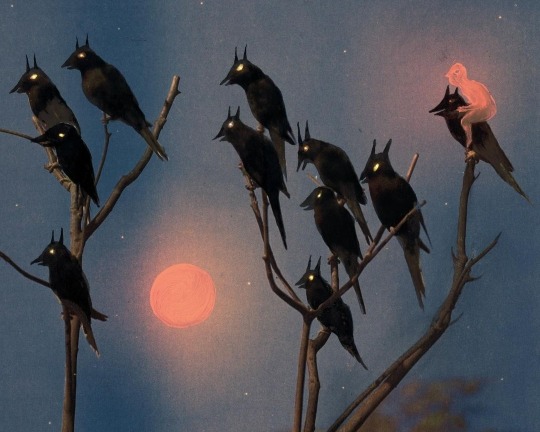
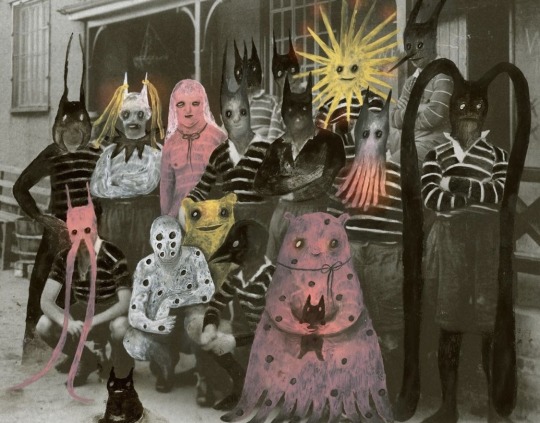
Julia Soboleva (Latvian, born 1990)
#julia soboleva#neosurrealism#metamodernism#surrealist art#surrealism#latvian art#dark surrealism#contemporary art
3K notes
·
View notes
Text


Jana Brike, "Of the Sky and the Earth", oil on linen, 2024.
This painting was exhibited in the @beautifulbizarremagazine exhibition ‘Fable & Folklore’ at May, at LA @coprogallery. Jana Brike was born in year 1980 in Riga, Latvia.
#jana brike#Of the Sky and the Earth#2024#oil on linen#oil painting#painting#art#latvian artist#Fable & Folklore#white#winged#woman#portrait#angel#Fable#folklore#myths#mystery#moon#night#flowers#surrealism#figurative art#contemporary art
102 notes
·
View notes
Text
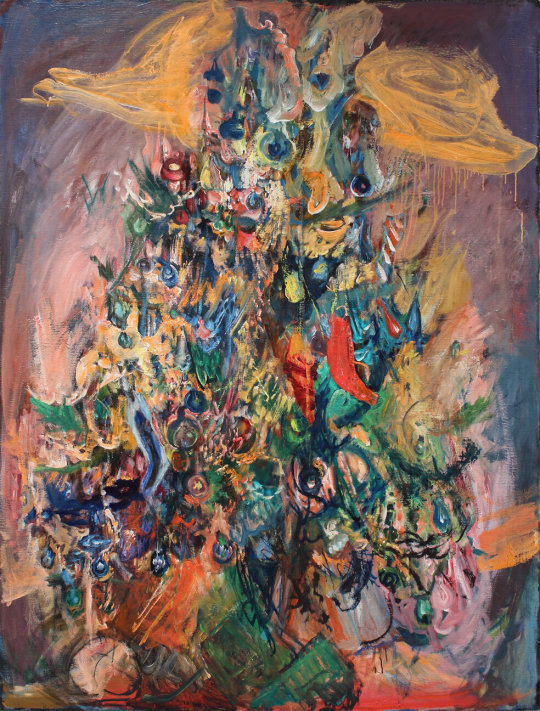
Christmas Tree, Hyman Bloom, 1983
Oil on canvas 60 ¼ x 46 in. (153.03 x 116.84 cm)
#christmas#art#painting#hyman bloom#contemporary art#abstract art#abstract expressionism#expressionism#20th century#1980s#latvian#american#oil#jewish
363 notes
·
View notes
Photo

Edgars Vinters (Latvian, 1919 – 2014) Roses, c. 2008, cardboard, oil, 87x67 cm
264 notes
·
View notes
Text
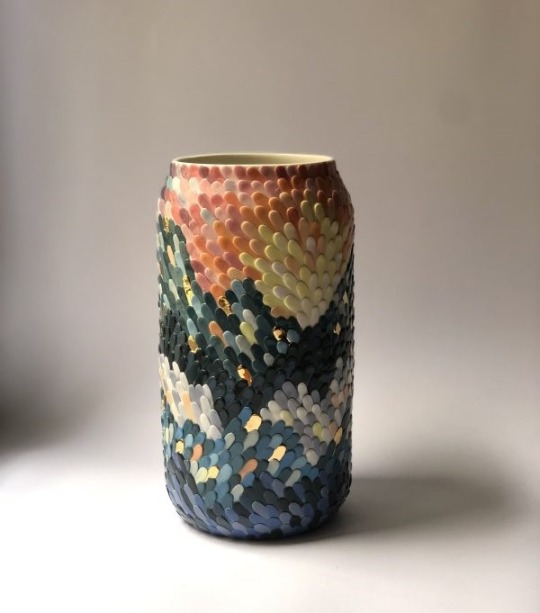
Laima Laurina
Sunset in the Mountains Vase #1
53 notes
·
View notes
Photo
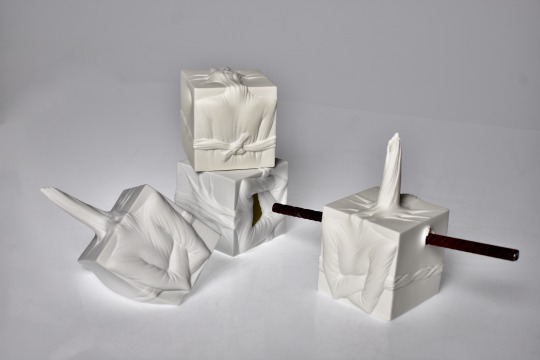
Ilona Romule — Straitjacket (ceramic sculpture; porcelain fired at gas reduction 1350˚C, 2018)
97 notes
·
View notes
Text

Dace Lapina (Latvian, b. 1954) Still Life with Peaches • n/d
#still life#art#painting#contemporary realism#fine art#art of the still life blog#woman painter#woman artist#dace lapina#latvian artist
18 notes
·
View notes
Text
Those who live in Kobe, Japan have an excellent opportunity to see an amazing exhibition!!
It's in Kobe's Urban Picnic lounge and its a sounding photo exhibition made by collaborating artists from Latvia and Japan!

Basically there are portraits of choir singers from both countries with Latvian ornament runes and Japanese kanji. In the background a Latvian folksong and a Japanese folksong are playing performed by all singers, but each portrait has a QR code to that person singing the songs separately!
I highly encourage to visit while you can!
#latvija#latvian#latvia#japan#japanese#japanese music#latvian music#choir#choir music#art#contemporary art#art exhibition#kobe#rīga#riga#japanese art#latvian art#日本#photography#portraits
2 notes
·
View notes
Text
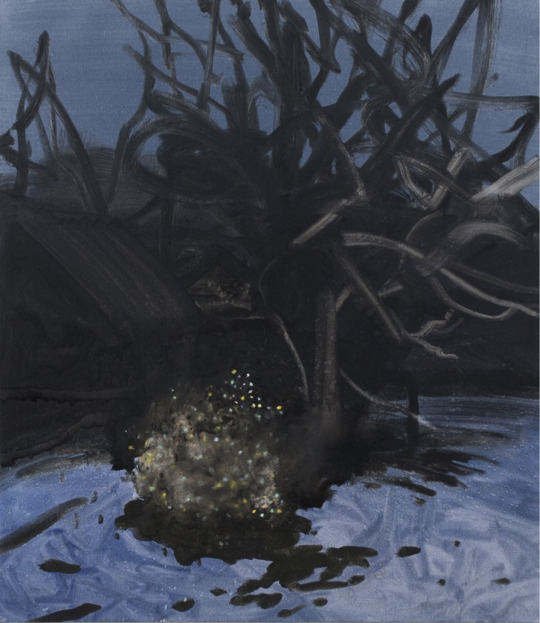
Andris Eglītis (Latvian b. 1981), Dažas iztēles un matērijas tikšanās (Some encounters of imagination and matter), 2021. Oil on canvas, 74 x 64 cm.
#art#artwork#modern art#contemporary art#modern artwork#contemporary artwork#21st century art#21st century modern art#21st century contemporary art#Latvian art#modern Latvian art#contemporary Latvian art#Latvian artist#Latvian painter#Andris Eglītis#Andris Eglitis
278 notes
·
View notes
Text

Mark Rothko, Russian/Latvian-American (25 September 1903 - 25 February 1970)
No. 61 (Rust and Blue) 1953
Oil on canvas, 115 cm x 92 cm (45 in x 36 in)
Location: Museum of Contemporary Art, Los Angeles USA
No. 61 (Rust and Blue) is a 1953 painting by the Russian-American Abstract expressionist artist Mark Rothko. The work was first exhibited at the Museum of Modern Art, New York in 1961. In common with Rothko's other works from this period, No. 61 consists of large expanses of color delineated by uneven, hazy shades. The Rust and Blue painting was a part of the Color Field Movement because No. 61 relies on subtle tonal values that are often variations of a monochromatic hue. Rust and Blue also uses layered coloring to enrich the hues in the painting, a quality the artist Mark Rothko described as "inner light".
Rothko painted in such a way that at times paint can be seen flowing upward across the surface. This illusion is caused because Rothko would invert his painting toward the final stages of his work. This effect can be seen in No. 61.
•
#Art#Fine art#Painting#Modernism#Abstraction#Abstract expressionism#Colour field painting#Paintings by Mark Rothko#‘No. 61 (Rust and Blue)’ 1953 painting by Mark Rothko#FamousFix
2 notes
·
View notes
Photo

Jana Brike, for her Solo exhibition "Children of the Sun" opening on November 23 at @beinartgallery, Australia. Jana Brike was born in year 1980 in Riga, Latvia.
#jana brike#children of the sun#solo exhibition#2024#oil painting#painting#art#latvian artist#mythology#three graces#myth#sisterhood#flowers#protection#crown#connection#blessing#women#portrait#sun#children#surrealism#figurative art#contemporary art
126 notes
·
View notes
Text

Night Sky #15, Vija Celmins, 2000-01
Oil on canvas 31 x 38 in. (79 x 97 cm)
#art#painting#vija celmins#contemporary art#women artists#21st century art#21st century#nightscape#oil#latvian#american#female artists
22 notes
·
View notes
Text
THE EVENS ARTS PRIZE 2023

Exploring the critical imaginaries of AI The Evens Arts Prize 2023 is dedicated to artistic practices that challenge prevailing systems of knowledge and experiments new alliances between living beings and machines.
The Jury is composed of Daniel Blanga Gubbay, Artistic Co-Director, Kunstenfestivaldesarts; Nicolas Bourriaud, Artistic Director, 15th Gwangju Biennale; Elena Filipovic, Director and Curator, Kunsthalle Basel; Matteo Pasquinelli, Associate Professor in Philosophy of Science, Ca’ Foscari University; Gosia Plysa, Director, Unsound. The Jury Chair is André Wilkens, Director, European Cultural Foundation. Artistic Director: Anne Davidian, curator.
Focus of the Evens Arts Prize 2023 The widespread use of AI applications, particularly in the form of text-to-image generators and large language models, has sparked intense scrutiny and debate. These discussions, fueled by both excitement about their potential and concerns about their biases, bring to the forefront crucial questions about human subjectivity, autonomy, and agency.
Technical systems are deeply intertwined with social systems, shaping our lived experiences, aspirations, and politics. Together with artists, how can we better understand and address the impact of AI and the broader constellation of digital technologies and algorithmic politics? What new imaginaries and alliances can we cultivate between living beings and machines?
The new edition of the Evens Arts Prize seeks to highlight artistic projects that explore alternative cosmologies and epistemologies, question human exceptionalism, and shed light on issues such as surveillance, manipulation, extractivism, digital governance, justice, care, and responsibility in the age of machine intelligence. Of particular interest are practices that experiment with AI to challenge prevailing systems of knowledge and power asymmetries, mobilise technologies towards emancipatory community outcomes, and envision democratic futures.
The laureate is selected by an independent jury from a list of nominations put forward by representatives of major European cultural institutions.
The Nominators of the Evens Arts Prize 2023 Ramon Amaro, Senior Researcher in Digital Culture, Nieuwe Instituut, Rotterdam; Zdenka Badovinac, Director, Museum of Contemporary Art, Zagreb; Lars Bang Larsen, Head of Art & Research, Art Hub, Copenhagen; Leonardo Bigazzi, Curator, Foundation In Between Art Films, Rome; Mercedes Bunz, Professor Digital Culture & Humanities, King's College, London; Francesca Corona, Artistic Director, Festival d'Automne, Paris; Julia Eckhardt, Artistic Director, Q-02, Brussels; Silvia Fanti, Artistic Director, Live Arts Week /Xing, Bologna; iLiana Fokianaki, Founder, State of Concept, Athens; Cyrus Goberville, Head of Cultural Programming, Bourse de Commerce | Pinault Collection, Paris; Stefanie Hessler, Director, Swiss Institute, New York; Mathilde Henrot, Programmer, Locarno Film Festival; Nora N. Khan & Andrea Bellini, Artistic Directors, Biennale Image en Mouvement 2024, Geneva; Peter Kirn, Director, MusicMakers HackLab, CTM Festival, Berlin; Inga Lace, Curator, Latvian Centre for Contemporary Art, Riga; Andrea Lissoni, Director, Haus der Kunst, Munich; Frank Madlener, Director, IRCAM, Paris; Anna Manubens, Director, Hangar, Barcelona; Anne Hilde Neset, Director, Henie Onstad, Høvikodden; Nóra Ó Murchú, Artistic Director, transmediale, Berlin; Maria Ines Rodriguez, Director, Walter Leblanc Foundation, Brussels; Nadim Samman, Curator for the Digital Sphere, KW Institute for Contemporary Art, Berlin; Andras Siebold, Artistic Director, Kampnagel, Hamburg; Caspar Sonnen, Head of New Media, International Documentary Film Festival (IDFA), Amsterdam; Marlies Wirth, Curator for Digital Arts, MAK, Vienna; Ben Vickers, Curator, Publisher, CTO, Serpentine Galleries, London.
The Evens Arts Prize The Evens Arts Prize honours artists who engage with contemporary challenges in Europe and shape inspirational visions for our common world. Far from reducing artistic practice to a function – whether a social balm or a political catalyst – the Evens Arts Prize supports aesthetically and intellectually powerful work that pushes the understanding of alterity, difference, and plurality in new directions, questions values and narratives, creates space for silenced or dissonant voices, and reflects on diverse forms of togetherness and belonging.
The biennial Prize is awarded to a European artist working in the fields of visual or performing arts, including cinema, theater, dance, music; it carries a sum of €15,000. The laureates are selected by an independent jury, from a list of internationally acclaimed artists, nominated by representatives of major European cultural institutions.
The 2011, 2019 and 2021 editions were curated by Anne Davidian and celebrated Marlene Monteiro Freitas, Eszter Salamon, and Sven Augustijnen as laureates of the main prize, while Eliane Radigue and Andrea Büttner received the Special Mention of the Jury.
More about the Prize
📷 from Atlas of Anomalous AI, edited by Ben Vickers and K Allado-McDowell, Ignota Books, 2020
4 notes
·
View notes
Text
INSIDE THE ATELIER: THE SECRET BEHIND OSCAR HEYMAN’S ICONIC FLORAL BROOCHES
"Jewelry should be the perfect blend of art and science." These words by Oscar Heyman perfectly capture the inspiration behind each of his masterpieces. Known for their flawless artistry, exquisite gemstone selection, and innovative craftsmanship, Oscar Heyman is highly sought after by connoisseurs and collectors worldwide. One of their stunning creations is the Oscar Heyman sapphire diamond pansy brooch 18 Karat, a magnificent homage to the beauty and elegance of nature. But have you ever wondered what is so remarkable about this brooch? Let's step inside Oscar Heyman's atelier to discover the enchantment behind the renowned floral designs.
A LEGACY ROOTED IN CRAFTSMANSHIP AND INNOVATION
Oscar Heyman has been associated with style and accuracy for more than a century. The company was founded by a family of Latvian jewels in 1912 and soon became well-known for its expertise with colored gemstones and platinum. Known as the "Jeweler's Jeweler,” Heyman has created pieces for some of the most prominent jewelry brands in the world, like Tiffany & Co. and Van Cleef&Arpels. Their signature designs infused with traditional methods and contemporary creativity have stood the test of time.
Oscar Heyman's collections often feature floral motifs, which honor nature's unforced beauty in a way that is both modern and timeless. With its exquisite craftsmanship and brilliant gemstones, the Oscar Heyman sapphire diamond 18K is a remarkable illustration of this artistic philosophy.
THE SYMBOLISM AND INSPIRATION BEHIND THE PANSY BROOCH
With velvety petals and eye-catching color variations, the pansy has long been associated with love, freedom, and remembrance. During the Victorian era, it was frequently given and received as a sign of love, making it a suitable choice for a masterpiece of fine jewelry.
Oscar Heyman sapphire diamond pansy brooch 18 Karat perfectly captures the essence of this delicate bloom with an unmatched degree of realism. The sapphire's velvety blue evokes the rich colors of a real pansy, while the diamonds add a dazzling sparkle that reflects the way morning dew catches the light on fresh petals. Furthermore, the 18K gold setting enhances the brilliance of the stones and adds more refinement to the pieces.
FROM CONCEPT TO CREATION: THE ART OF CRAFTING A FLORAL BROOCH
It takes considerable time, accuracy, and a sense of style to turn a fragile flower into a stunning piece of jewelry. Here's a glimpse of the meticulous process used to create the 18-karat Oscar Heyman Sapphire diamond pansy brooch:
The Design Process: Every Oscar Heyman piece starts with a hand-drawn sketch. The objective is to preserve the brooch's structural integrity and wearability while capturing the realistic features of the flowers.
Choosing the Ideal Gemstones: Oscar Heyman is known for its flawless gemstone selection. The pansy brooch features Ceylon sapphires, which are selected for their remarkable clarity and deep blue hues. Additionally, brilliant-cut diamonds are added to ensure the brooch exudes elegance from all sides and increases its overall sparkle.
Crafting the Gold Framework: After the selection of gemstones, the frame of the brooch is carefully crafted from 18-karat gold. Artisans shape and polish this gold to create the organic, natural flow of the petals.
Precious Stone Setting: Each sapphire and diamond is meticulously placed by hand, requiring extreme attention to detail. To replicate the delicate color of a real pansy and achieve the appropriate depth and contrast, the stone must be perfectly positioned.
Final Touches and Quality Control: Following the setting of the stones, the brooch is now ready for final polishing and quality checks. Oscar Heyman's dedication to excellence means each piece is examined to make sure it satisfies their high standards before being considered worthy of wearing.
WHY COLLECTORS TREASURE OSCAR HEYMAN BROOCHES
An Oscar Heyman floral brooch is valued by jewelry collectors and enthusiasts for its exceptional beauty, classic craftsmanship, and investment potential. These pieces are always in high demand because of their superior quality, rarity, and attention to detail. Because of these traits, many of Oscar Heyman's flower brooches have been handed down through the generations as priceless heirlooms.
Furthermore, the value of investment-grade and vintage jewelry is on the rise in today's market scenario. Owning an 18K Oscar Heyman sapphire diamond pansy brooch is not only a celebration of artistry; it’s also a smart investment in a piece that will keep on appreciating over time.
HOW TO STYLE YOUR OSCAR HEYMAN PANSY BROOCH
Fashion has seen a significant comeback of floral brooches, which enable wearers to showcase elegance in original and imaginative ways. Here are some styling ideas for this gorgeous brooch:
Traditional Lapel Accent: For a casually stylish look, pin it to the lapel of a fitted coat or jacket.
Evening Glamour: When wearing an evening gown or velvet dress, use the brooch as a striking focal point.
Upgrade your Hair Accessory: For a chic updo, fasten the brooch to a sleek hair comb or clip.
Handbag or Scarf Detail: To give your accessories a more luxurious feel, add the brooch to a designer handbag or silk scarf.
A MASTERPIECE OF JEWELRY DESIGN
When one understands the level of creativity and skill, and the painstakingly meticulous process behind making the Oscar Heyman sapphire diamond pansy brooch 18 Karat, it seems more than just a lovely accessory through the lens of the artists; a celebration of nature, an artistic creation, and evidence of the designer's lasting influence. Its craftsmanship, stunning gemstones, and classic design make the brooch a classic style that will always be in style, no matter all the fashion fads.
Cris Notti Jewels has this gorgeous brooch in stock for anyone who wants to own a genuine piece of fine jewelry from one of the greatest designers. To discover this exceptional design, visit Cris Notti Jewels today and have a look at a jewel that is as timeless as nature, elegant, and encapsulated in gemstones and gold.
0 notes
Text
MYRIAM VAN IMSCHOOT AND MAT POGO AT THE SURVIVAL KIT FESTIVAL

2024/09/28-29 Survival Kit NATURE Workshop by MYRIAM VAN IMSCHOOT and MAT POGO Gallery Smilga Riga - LV
Myriam van Imschoot and Mat Pogo were invited to hold a workshop for 'Nature', the third episode of four in this year's 15th edition of the Survival Kit Contemporary Art Festival in Riga, organised by the Latvian Centre for Contemporary Art. The workshop will take place over two days, Saturday and Sunday 28 and 29 September Check the programme here For the 15th time this autumn the Latvian Centre for Contemporary Art will host the Survival Kit festival in Riga - one of the most notable annual contemporary art events in the Baltics. The exhibition "Measures", curated by the festival's artistic director Jussi Koitela, will be open from 6 September to 6 October at three locations on both banks of the River Daugava - 4 Amatu Street, 34a E. Smiļģa Street and 4 Strazdu Street. As every year, the festival will be accompanied by an extensive public and educational programme, keeping in mind the accessibility of contemporary art to different groups of society. A separate programme of events will also take place within the framework of the contemporary culture forum "White Night".Continuing the theme of the exhibition "Measures", the public programme of the festival invites artists and thinkers to reflect on the different forms of knowledge produced by the city and its communities. Gundega Laiviņa, curator of the Survival Kit 15 public programme, says: "The programme is designed to remind people of their right to access the city's resources, their right to change the city and to change themselves. It invites us to see the city not as a fixed and finished environment to navigate, but rather as a porous and ever-changing space where things become possible."
The Survival Kit 15 public programme, curated by Gundega Laiviņa, is divided into four episodes - "Artist" (11 September), "Place" (21 September), "Nature" (29 September) and "Future" (5 October) - held at all festival's exhibition addresses and throughout Riga.
The third episode of the public programme, "Nature", will reveal the inextricable, complex relationship between the city and nature in the form of a collective ritual - two chirping sessions led by the Flemish artist Myriam van Imschoot. https://lcca.lv/en/events/survival-kit-15-programme-announced/
THE THIRD EPISODE: NATURE Saturday, September 28 18.00-21.00 Sunday, September 29, 6.30-9.30 Meeting place: Gallery Smilga at Eduarda Smiļģa street 34a In our consciousness and communication, the city and the country seem to be two separate spaces. The third episode of the public programme will break down this invisible boundary and reveal the inextricable, complex, and fluid relationship between the city and nature.
The episode will focus on the idea of the city as a habitat for diverse organisms and communities. How to build a city that respects every being, and its right to space and life? Who is destined and allowed to survive in the city? The answer to this question will be sought not in theory, but in a collective ritual - in two cricketing sessions, during which the voice and the body will be used to get closer to the knowledge of more-than-humans. We will gather at sunrise and sunset to listen to the city and gradually become a choir of grasshoppers, cicadas, crickets, and locusts.
The sessions will be led by Berlin-based improviser and producer Mat Pogo and Myriam van Imschoot, a Flemish artist who works with sound, exploring yodelling, crying, nature sounds and new polyphonies created by the fusion of human and more-than-human sounds, with the city humming in the background.
In this session we will develop a particular sounding and listening practice that Myriam Van Imschoot developed over the last ten year based on studies of sonic ecology and biomimicry. Inspired by the stridulation of insects (the rubbing of wings and other body parts), the artists developed a set of techniques for humans to ‘chorus’ together like insects. Cricketing proposes to practice as a ‘sonic community’ the subtleties of vibrational listening, the complexities of rhythmical pulsations and the pleasure of diving in and out of noise within an environmental dialogue with nature. The overall collective composition emerges from the many small interactions that happen on site amongst the participants. The Session encompasses warm-ups, listening moments, cricket practice and improvisational scores.
Open for anyone who is a nature lover, a keen listener, a person who loves sound or has a curiosity for new sound techniques. Enlist by sending your prefered Session time, a couple of sentences about yourself and how this Session speaks to you to the e-mail: [email protected].
Depending on the weather conditions the Session will happen outdoors or as a mixture of indoor and outdoor moments. Participants will be guided in English. https://lcca.lv/en/survival-kit-15/programme-sk15/
0 notes